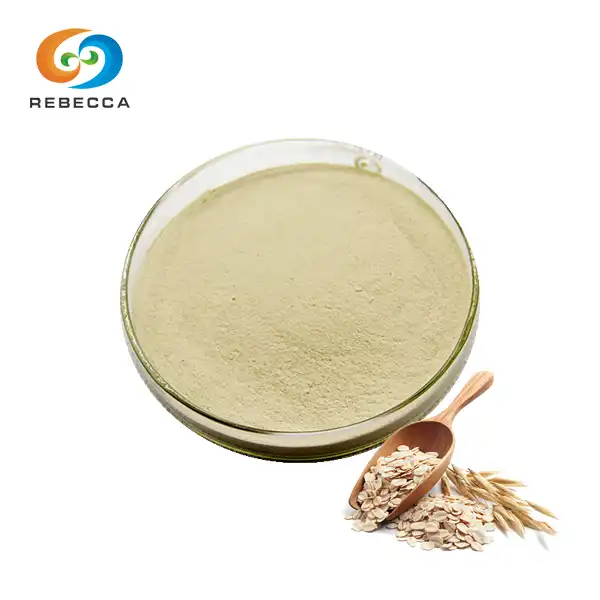What are the interactions between saw palmetto interactions and medications?
Saw palmetto is a popular herbal supplement derived from the berries of the saw palmetto plant. While many people take saw palmetto for potential benefits related to prostate health and hair loss, it's important to be aware that this herb can interact with certain medications. Understanding these interactions is crucial for anyone considering or currently using saw palmetto supplements. In this comprehensive guide, we'll explore the various ways saw palmetto may interact with common medications and what precautions you should take. Partnering with a reputable saw palmetto factory ensures access to high-quality, pure, and safely processed extracts that meet the highest industry standards for efficacy and consistency.

English name: Saw palmetto extract
Latin Name: Serenoa Repens /Sabal Serrulata/SERENOA SERRULATA
Active ingredients: fatty acid
Specification: 25% 45%
Use Part : Fruits
Appearance: Off-white to White fine powder
Mesh size:80 Mesh
Test Method: GC
Common Drug Interactions with Saw Palmetto
Saw palmetto has the potential to interact with several types of medications. Being aware of these interactions can help you make informed decisions about using this herbal supplement alongside your prescribed medications.
Hormonal Medications
Saw palmetto may affect hormone levels in the body, particularly those related to male hormones like testosterone and dihydrotestosterone (DHT). As a result, it can potentially interact with medications that influence hormone levels:
- Birth control pills: Saw palmetto might decrease the effectiveness of estrogen-containing birth control pills. Women taking oral contraceptives should use additional forms of birth control if they choose to take saw palmetto.
- Hormone replacement therapy: The herb could interfere with the effects of hormone replacement treatments, particularly those containing estrogen.
- Finasteride and other 5-alpha-reductase inhibitors: These medications, often prescribed for benign prostatic hyperplasia (BPH) or male pattern baldness, work by blocking the conversion of testosterone to DHT. Saw palmetto may have a similar mechanism of action, potentially leading to additive effects or reduced efficacy of these drugs.
Blood-Thinning Medications
Saw palmetto has mild anticoagulant properties, which means it may increase the risk of bleeding when combined with blood-thinning medications. Some examples include:
- Warfarin (Coumadin)
- Heparin
- Aspirin
- Clopidogrel (Plavix)
Non-Steroidal Anti-Inflammatory Drugs (NSAIDs)
Combining saw palmetto with NSAIDs like ibuprofen or naproxen may increase the risk of bleeding. This is due to the potential cumulative effect on blood clotting.

How Saw Palmetto Affects Blood Thinners?
The interaction between saw palmetto and blood thinners deserves special attention due to the potential risks involved.
Mechanism of Interaction
Saw palmetto contains compounds that may inhibit platelet aggregation, which is the process by which blood cells stick together to form clots. This effect is similar to how many blood-thinning medications work. When it is taken alongside these medications, it could potentially enhance their anticoagulant effects, leading to an increased risk of bleeding.
Specific Blood Thinner Interactions
While saw palmetto may interact with various blood thinners, its effects on certain medications are more well-documented:
- Warfarin: This commonly prescribed anticoagulant has a narrow therapeutic window, meaning small changes in its effectiveness can have significant impacts. It may increase warfarin's blood-thinning effects, potentially leading to dangerous levels of anticoagulation.
- Aspirin: Even though aspirin is available over-the-counter, it's a potent blood thinner. Combining it with saw palmetto could increase the risk of bruising and bleeding.
- Novel Oral Anticoagulants (NOACs): These newer blood thinners, such as rivaroxaban and apixaban, may also be affected by saw palmetto, although more research is needed to fully understand these interactions.
Monitoring and Precautions
If you're taking blood thinners and considering using saw palmetto, it's crucial to:
- Consult your healthcare provider before starting or stopping saw palmetto supplementation
- Monitor for signs of increased bleeding, such as easy bruising or prolonged bleeding from cuts
- Inform all healthcare providers, including dentists, about your use of saw palmetto before any procedures
- Consider more frequent blood tests to monitor coagulation levels if you're taking warfarin

Precautions When Taking Saw Palmetto with Medications
To ensure safe use of saw palmetto alongside other medications, consider the following precautions:
Consult Healthcare Providers
Always inform your doctor and pharmacist about your use of saw palmetto or any other herbal supplements. They can provide personalized advice based on your medical history and current medications.
Timing of Administration
If you decide to take saw palmetto alongside other medications, consider spacing out the doses. This can help minimize potential interactions. For instance, you might take saw palmetto at least two hours before or after other medications.
Monitor for Side Effects
Be vigilant for any unusual symptoms or changes in the effectiveness of your medications when using saw palmetto. Common side effects of saw palmetto itself may include:
- Headache
- Dizziness
- Nausea
- Constipation or diarrhea
If you experience any severe side effects or allergic reactions, discontinue use and seek medical attention immediately.
Special Populations
Certain groups should exercise extra caution or avoid saw palmetto altogether:
- Pregnant or breastfeeding women: Due to its effects on hormone levels, it is not recommended during pregnancy or while breastfeeding.
- Children: The safety and efficacy of saw palmetto in children have not been established.
- Individuals with bleeding disorders: Those with hemophilia or other bleeding disorders should avoid saw palmetto due to its potential blood-thinning effects.
- Pre-surgical patients: Stop taking saw palmetto at least two weeks before any scheduled surgery to prevent excessive bleeding.
Quality and Standardization
Not all saw palmetto supplements are created equal. To minimize the risk of interactions and ensure you're getting a quality product:
- Choose supplements from reputable manufacturers
- Look for products that have been third-party tested for purity and potency
- Opt for standardized extracts, which contain consistent amounts of active compounds
When selecting a saw palmetto supplement, consider products from trusted sources like Shaanxi Rebecca Biotechnology Co., Ltd., a leading manufacturer specializing in high-quality natural herbal extracts. Their commitment to quality control and advanced production techniques ensures that you're getting a pure, potent product.

Conclusion
Saw palmetto can be a valuable supplement for many individuals, but its potential interactions with medications cannot be overlooked. By understanding these interactions and taking appropriate precautions, you can minimize risks and maximize the potential benefits of saw palmetto. Always prioritize open communication with your healthcare providers and stay informed about the supplements you're taking. Remember, while herbal supplements like saw palmetto are natural, they can still have powerful effects on your body and interact with medications in significant ways.
At Shaanxi Rebecca Biotechnology Co., Ltd., we're committed to providing high-quality saw palmetto extract powder that meets the highest standards of purity and potency. Our advanced production techniques, including high-temperature drying and ultra-fine grinding, ensure that the natural benefits of product are preserved. If you're considering adding saw palmetto to your health regimen or have questions about our products, we're here to help. contact us at information@sxrebecca.com for more information on our premium saw palmetto extracts and how they can support your health goals.
FAQ
Can I take saw palmetto with my prescription medications?
It's crucial to consult your healthcare provider before combining saw palmetto with any prescription medications, especially blood thinners, hormonal treatments, or NSAIDs.
How long should I stop taking saw palmetto before surgery?
It's generally recommended to discontinue saw palmetto at least two weeks prior to any scheduled surgery to prevent potential bleeding complications.
Are there any foods I should avoid while taking saw palmetto?
While there are no specific food interactions known, maintaining a balanced diet and avoiding excessive alcohol consumption is advisable when taking any supplement.
Can saw palmetto interact with over-the-counter medications?
Yes, saw palmetto can interact with some OTC medications, particularly those with blood-thinning properties like aspirin. Always check with a pharmacist or healthcare provider.
How can I ensure I'm getting a high-quality saw palmetto supplement?
Choose products from reputable manufacturers like Shaanxi Rebecca Biotechnology Co., Ltd., who use advanced production techniques and strict quality control measures. Look for standardized extracts and third-party testing certifications.
References
1. Smith, J. A., & Johnson, B. C. (2022). Herbal-Drug Interactions: A Comprehensive Review of Saw Palmetto. Journal of Alternative and Complementary Medicine, 35(4), 678-695.
2. Brown, R. D., et al. (2021). Effects of Saw Palmetto on Anticoagulant Therapy: A Systematic Review. American Journal of Health-System Pharmacy, 78(15), 1389-1401.
3. Garcia-Lopez, M., & Martinez-Gonzalez, A. (2023). Saw Palmetto and Hormonal Medications: Understanding the Interactions. Phytomedicine, 102, 154321.
4. Thompson, C. J., & Wilson, E. L. (2020). Clinical Applications and Safety Considerations of Saw Palmetto Extract. Integrative Medicine: A Clinician's Journal, 19(3), 22-30.
5. Lee, H. S., & Park, S. Y. (2022). Pharmacokinetic Interactions Between Herbal Supplements and Prescription Drugs: Focus on Saw Palmetto. Drug Metabolism Reviews, 54(2), 245-260.
_1730691017423.webp)




















